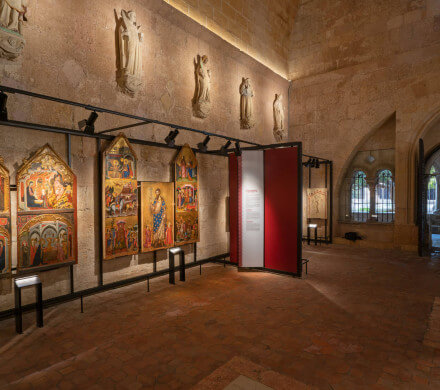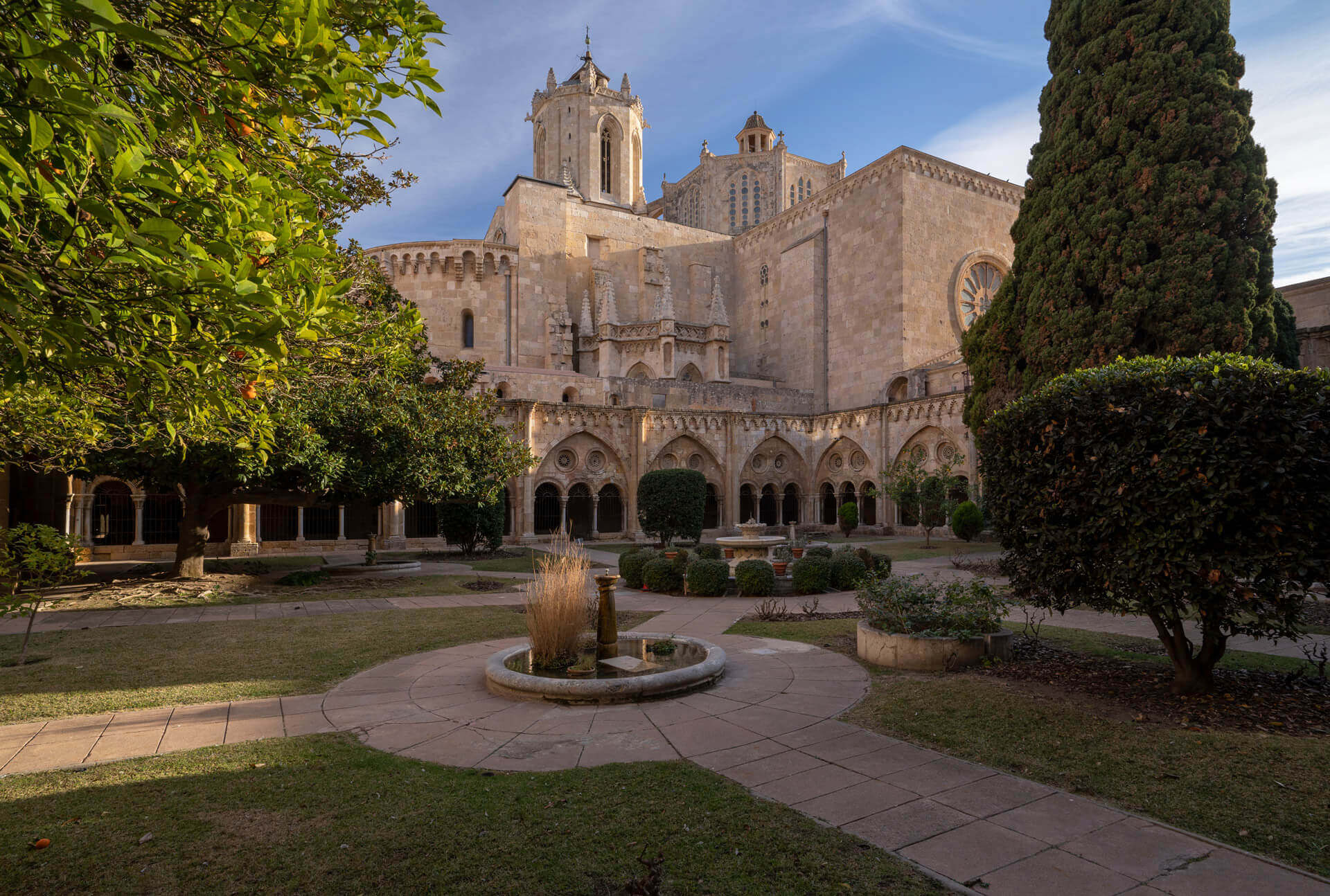
Art and history of Tarragona Cathedral
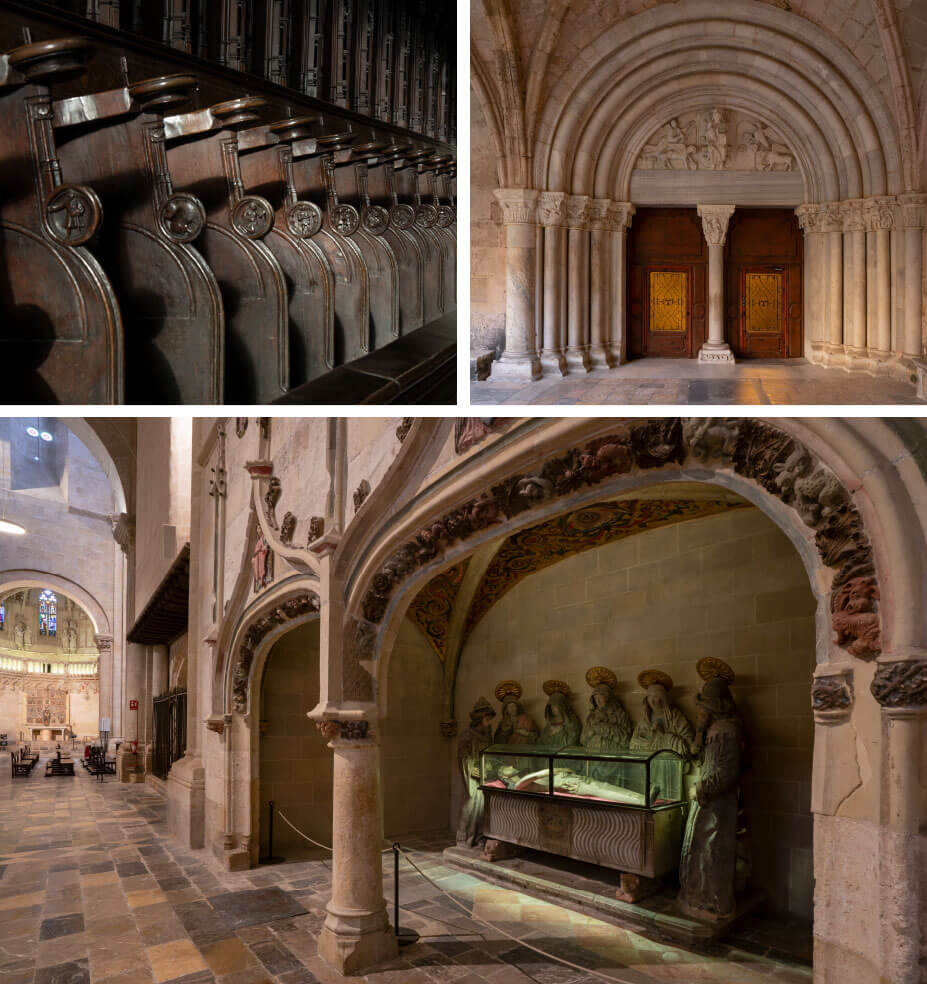
The Cathedral complex is located on the highest point of the city, on a promontory that was initially used as a barracks for the Roman armies commanded by General Gnaeus Cornelius Scipio Calvus (3rd century BC). In the 1st century AD, this site was transformed into a sacred area presided over by the Temple of Augustus, which was probably transformed, during the Visigoth period (5th-6th century AD), into an episcopal complex with the Cathedral, baptistery and Bishop's palace. After the hiatus during the Islamic period, when no buildings are documented, the construction of the medieval cathedral began in 1171, thanks to the financial resources bequeathed by Archbishop Hug de Cervelló in his will. The cathedral was built on the remains of the religious site from the time of the Roman Empire.
The Cathedral, with a Latin cross design of 104 metres in length and a large cloister with marbled decoration and 295 capitals, became one of the most imposing Romanesque cathedrals in Christendom. In 1331 it was consecrated by the Archbishop and Patriarch of Alexandria, John of Aragon. Due to the Black Death that reached Tarragona in 1348, the façade was left unfinished. The chapels that open onto the side naves reveal how styles evolved from the Gothic to the Baroque period. Today, the Cathedral, metropolitan and primate, continues to be a spiritual and cultural beacon in the 21st century.
Plan of the Cathedral
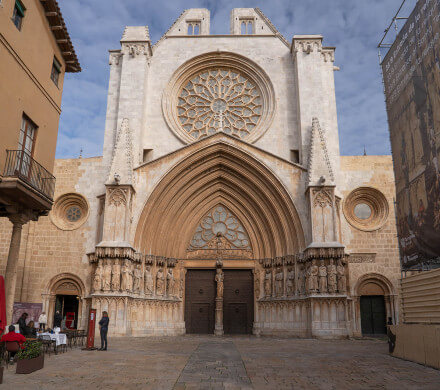
1. Cathedral façade
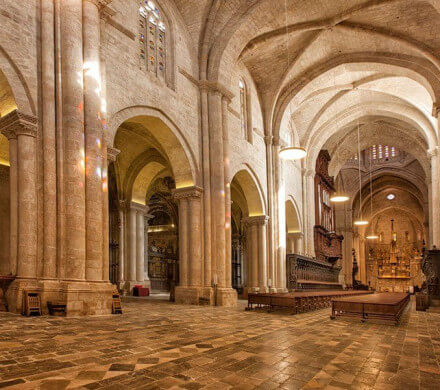
2. Central and side naves
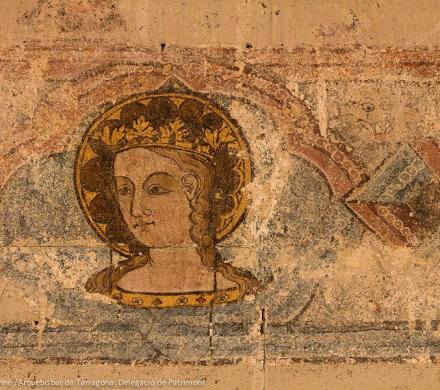
3. Baptistery chapel
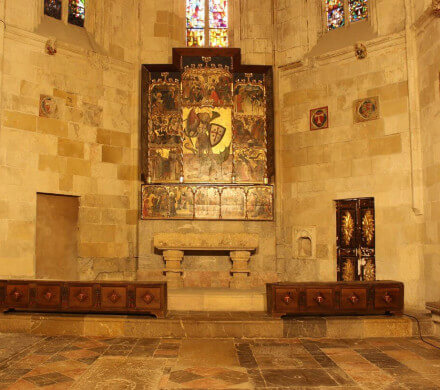
4. Chapel of Saint Michael
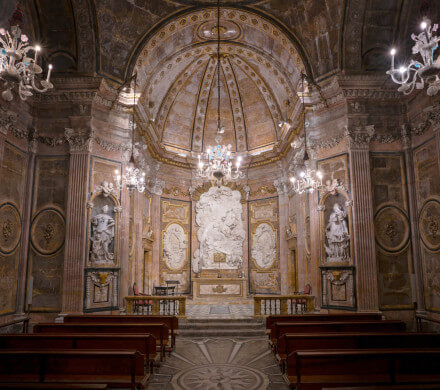
5. Chapel of Saint Thecla
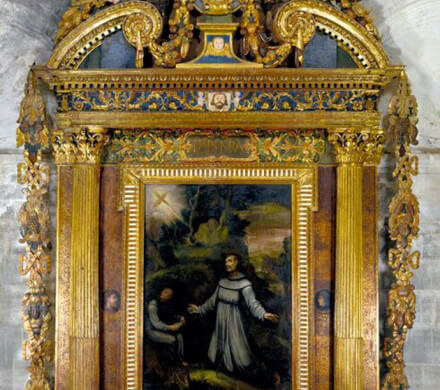
6. Chapel of Saint Francis
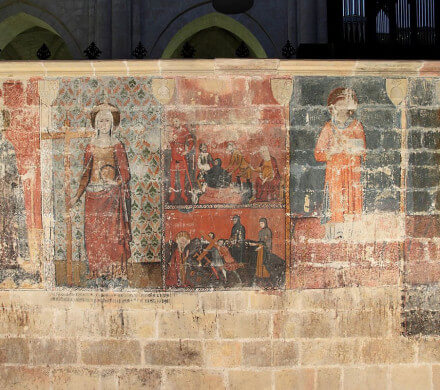
7. Chapel of Saint Helen
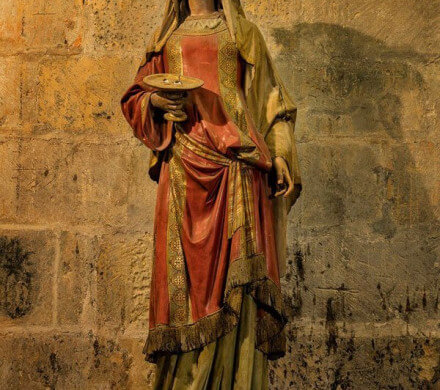
8. Chapel of Saint Lucy
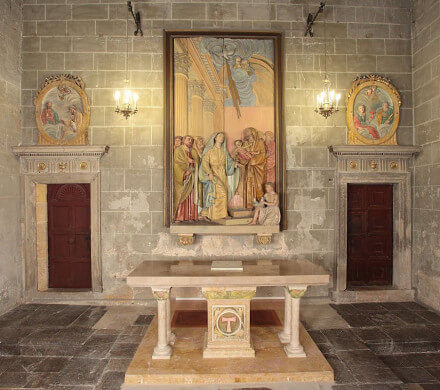
9. Chapel of the Presentation
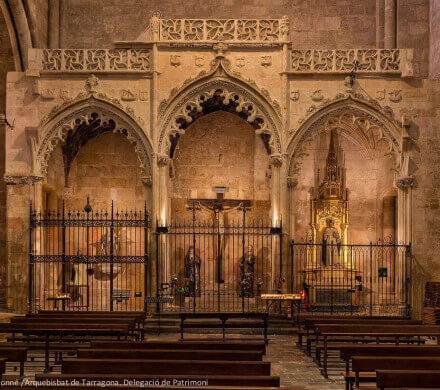
10. Chapels on the right side of the transept
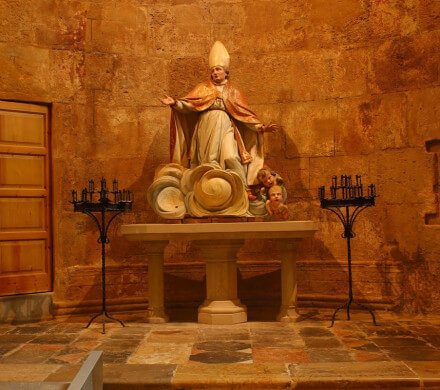
11. Chapel of Saint Olegarius
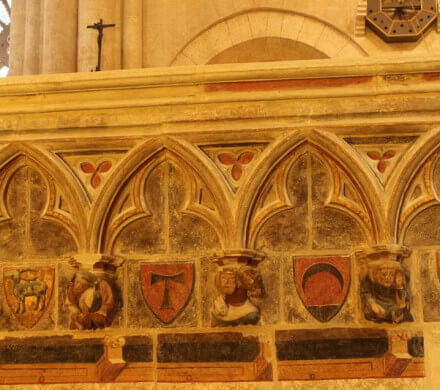
12. Chancel
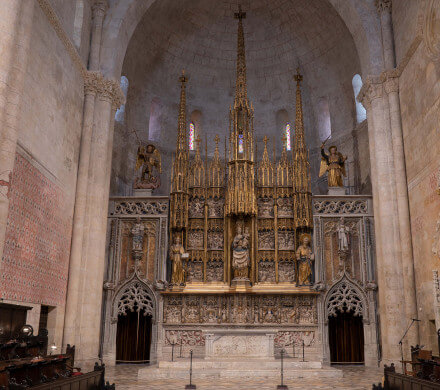
13. Old main altar
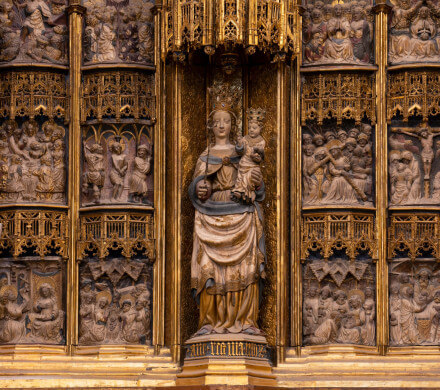
14. Main altarpiece
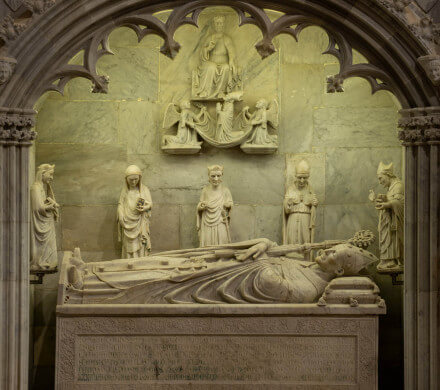
15. Sepulchre of John of Aragon
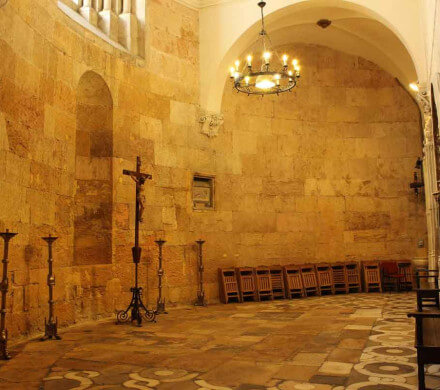
16. Apse and sacrament house

17. Chapel of Saint Mary or Tailors’ chapel
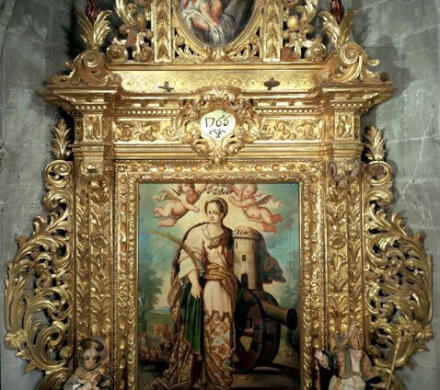
18. Chapel of Saint Barbara
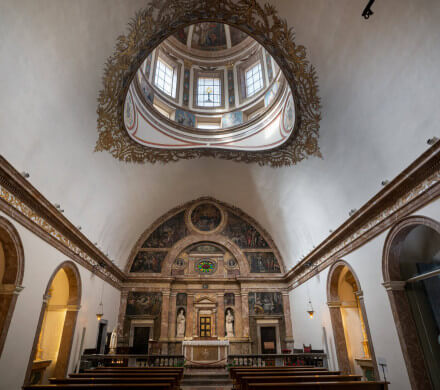
19. Chapel of the Holy Sacrament
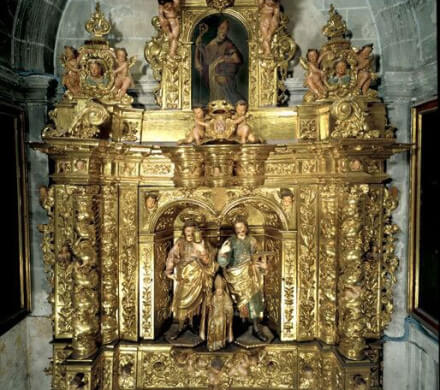
20. Chapel of Saints Cosmas and Damian
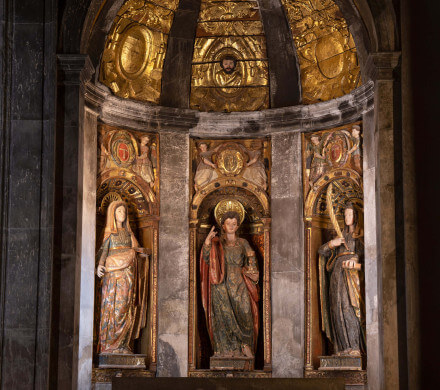
21. Chapel of Saint John the Evangelist
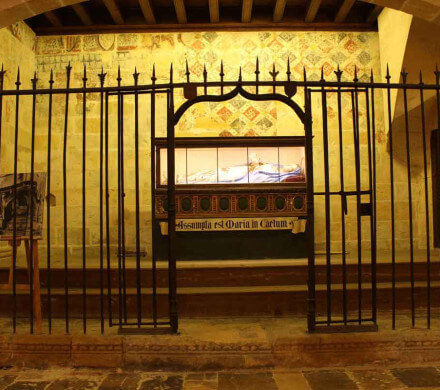
22. Chapel of Saint Isabel
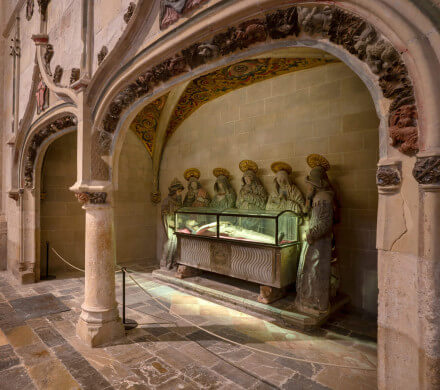
23. Chapel of the Holy Sepulchre
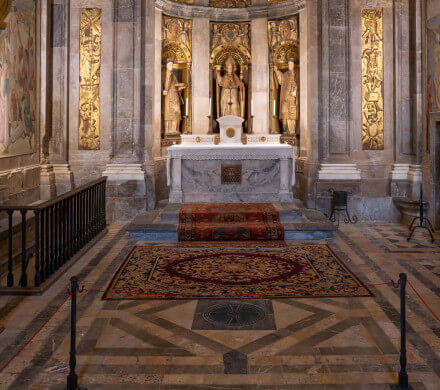
24. Chapel of Saint Fructuosus
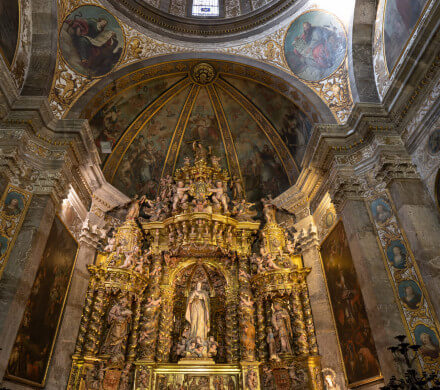
25. Chapel of the Immaculate Conception
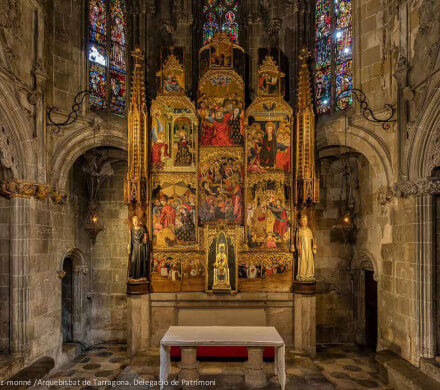
26. Chapels of the Cardona Family
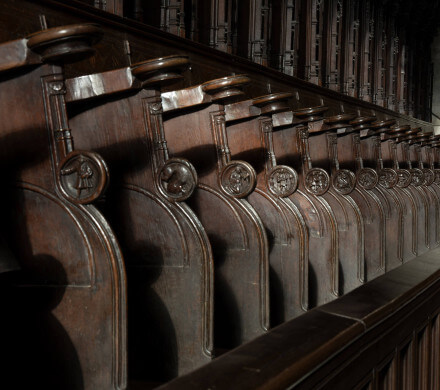
27. Old choir stalls
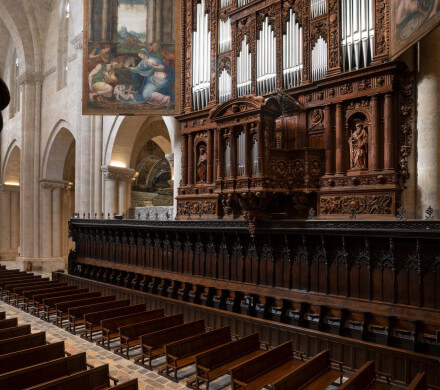
28. Organ
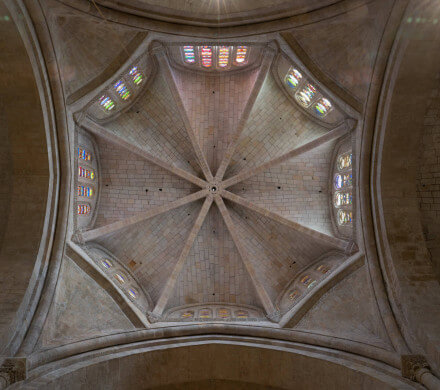
29. Transept
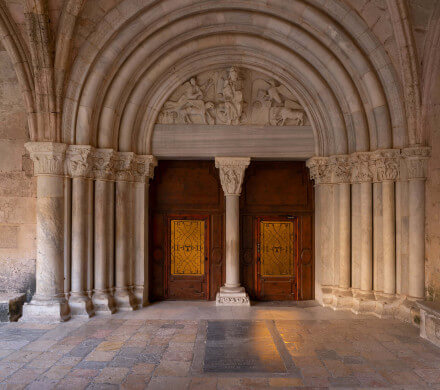
30. Romanesque portal to the cloister
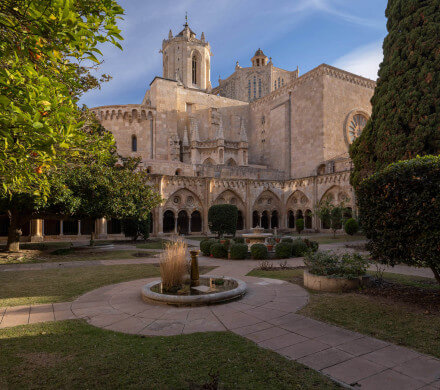
31. Cloister garden
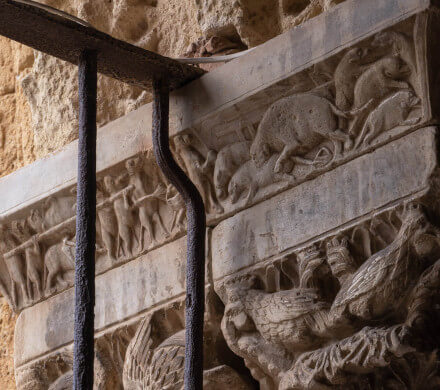
31B. Cyma and the "Procession of the Rats"
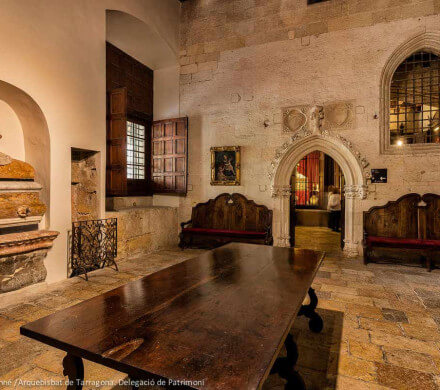
32. Main Sacristy
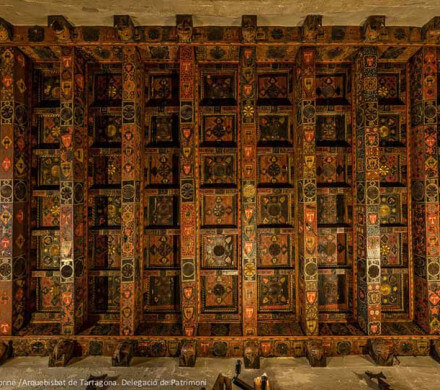
33. Treasury
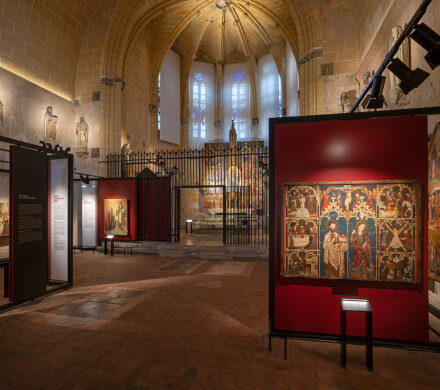
34. Corpus Christi chapel
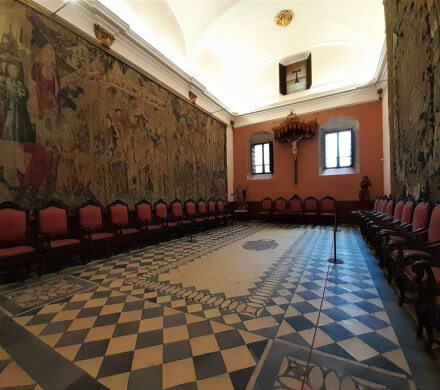
35. Chapter Room
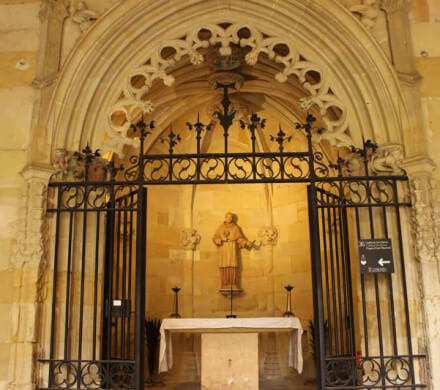
36. Chapel of Saint Raymond
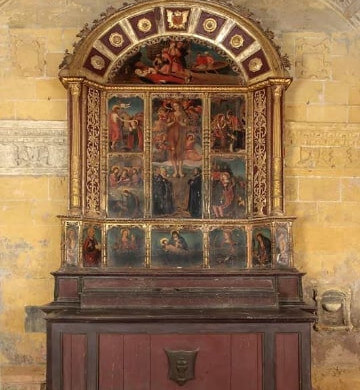
37. Chapel of Saint Mary Magdalena
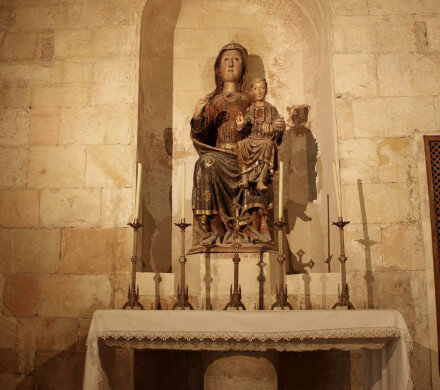
38. Chapel of our Lady of Guidance
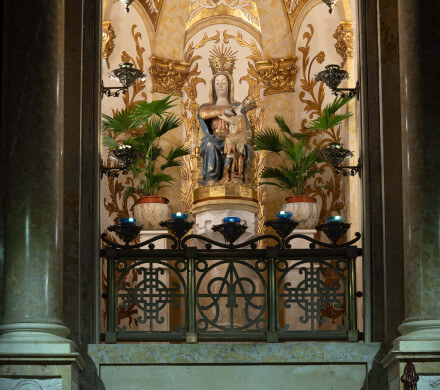
39. Chapel of our Lady of the Cloister
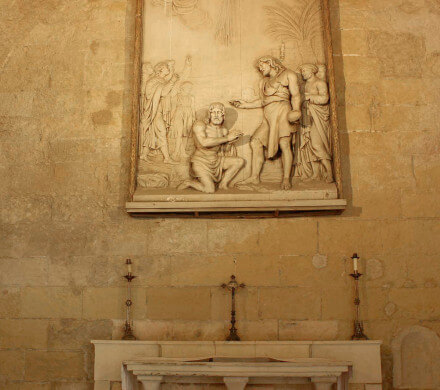
40. Chapel of the Holy Saviour
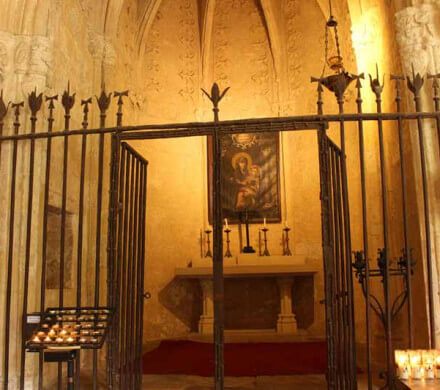
41. Chapel of our Lady of Snows
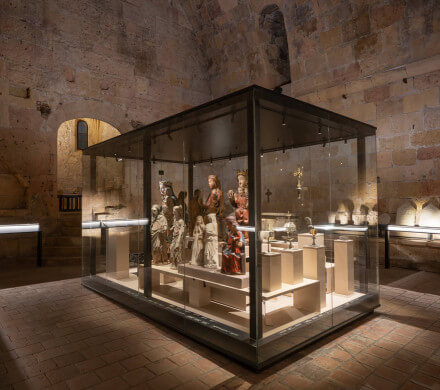
42. Old canons' refectory
